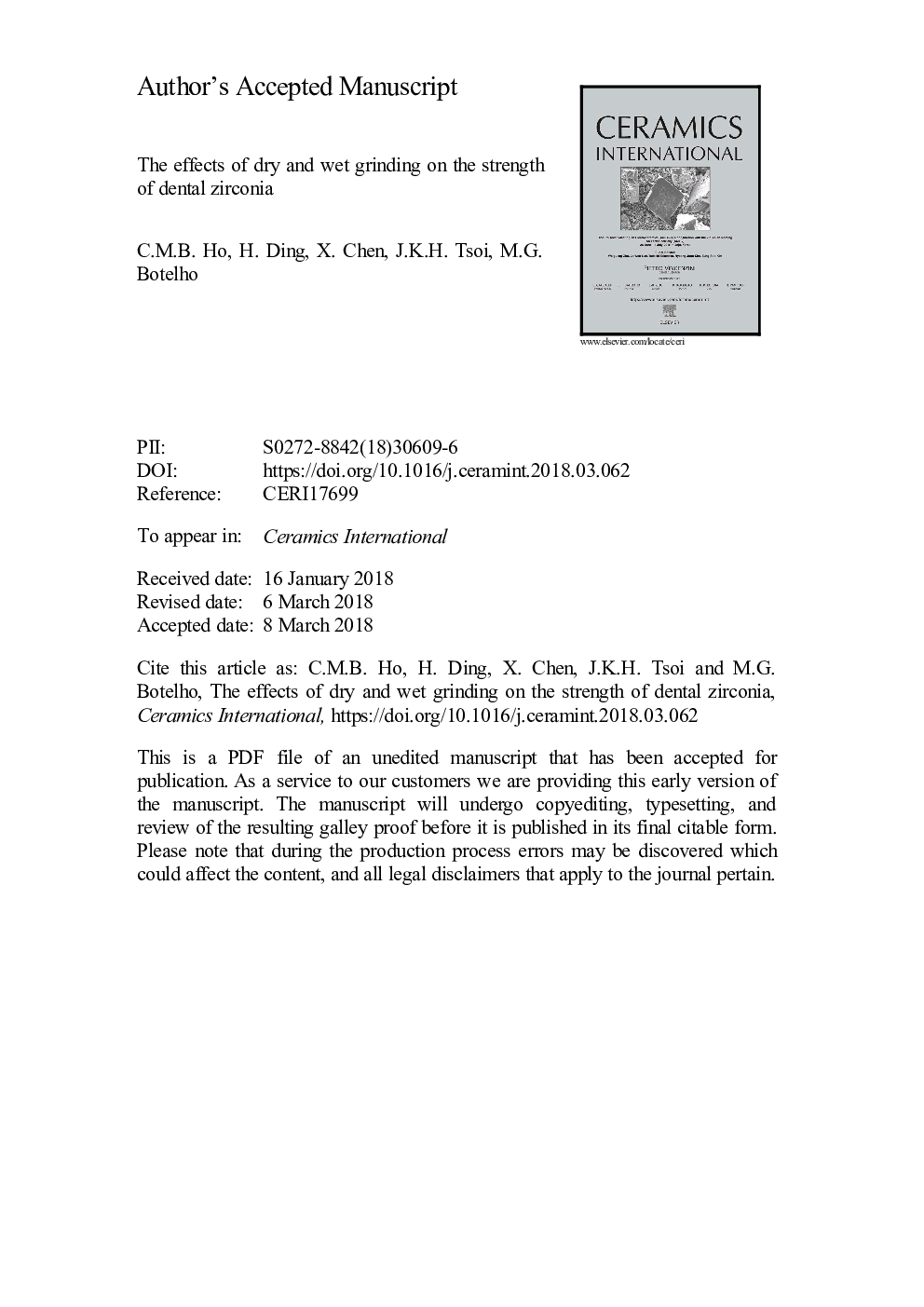| Article ID | Journal | Published Year | Pages | File Type |
|---|---|---|---|---|
| 7887174 | Ceramics International | 2018 | 34 Pages |
Abstract
The purpose of this study was to evaluate the effect of different dry and wet surface finishing on the mechanical strength and surface characters of a dental yttria-stablized zirconia ceramic (Y-TZP). Surface grinding treatments with a dental air turbine handpiece were performed with: coarse diamond (DC) and fine diamond (DF), tungsten carbide (Tc) and fine tungsten carbide (TcF) burs with or without water coolant. Air particle abrasion with 50â¯Âµm alumina (APA), combination of burs treatments or burs-abrasion, i.e. DC-TcF and DC-APA, were also performed with non-treatment group as control (C). Statistical analyses (αâ¯=â¯0.05) on results revealed that all surface treatments significantly increased the surface roughness (Ra) than control (pâ¯<â¯0.05), whilst decreased breaking force (BFN) and biaxial flexural strength (BFS). Tungsten carbide surface treatment could significantly lower (pâ¯<â¯0.05) BFS and BFN, but DC only significantly lowered BFN. DC and tungsten carbide treatments exhibited significantly lower BFS values in wet than dry. A positive correlation was found between the BFS and BFN with the number of fragments. Only tetragonal phase of ZrO2 was presented by XRD. Synchrotron XRD revealed the (101) peak exhibits a broadening effect in the tungsten carbide treated specimens (38â¯nm for Tc and 30â¯nm for TcF), i.e. grain sizes in these specimens were smaller than the control (60â¯nm for C). This study outcome suggested that tungsten carbide burs should be avoided for grinding Y-TZP because of significant reduction in the BFS. Water cooling during grinding did not consistently reduce the potential heat damaging effects expected with dry grinding.
Related Topics
Physical Sciences and Engineering
Materials Science
Ceramics and Composites
Authors
C.M.B. Ho, H. Ding, X. Chen, J.K.H. Tsoi, M.G. Botelho,
